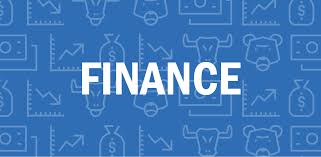
Introduction: Two Pillars of Modern Market Hedging
Commodity trading is one of the oldest and most dynamic sectors in global finance. From agricultural products and metals to crude oil and natural gas, commodities form the foundation of global trade. Yet, beyond physical delivery and spot pricing, two derivative instruments dominate modern commodity markets — futures and options.
For traders operating on a Global trading platform, understanding these instruments is essential to manage risk, amplify returns, and navigate price volatility. While both tools allow investors to speculate or hedge against commodity price changes, they differ fundamentally in structure, cost, and strategic flexibility. The debate between futures and options isn’t about which is better — it’s about which fits your trading goals and risk profile.
Understanding Commodity Futures
A futures contract is a standardized agreement to buy or sell a specific quantity of a commodity at a predetermined price on a future date. Futures are legally binding — both parties must fulfill the contract upon expiration unless the position is closed earlier.
Key Characteristics:
- Standardization: Each contract specifies the asset, quantity, delivery date, and quality.
- Leverage: Traders can control large positions with a fraction of the capital.
- Margin Requirement: A small initial deposit (typically 5–10%) is used to open a position.
- Mark-to-Market: Daily profit and loss adjustments maintain account balance integrity.
Futures appeal to active traders, producers, and institutional hedgers seeking direct exposure to price movements.
Example:
A trader believes crude oil prices will rise.
- They buy a futures contract for delivery at $80 per barrel.
- If oil rises to $85, they profit $5 per barrel.
- If it drops to $75, they lose $5 per barrel.
The outcome is symmetrical — gains and losses are unlimited, reflecting the all-or-nothing nature of futures.
Understanding Commodity Options
Options provide the right — but not the obligation — to buy or sell a commodity at a specific price within a defined period. Unlike futures, the buyer can choose whether or not to exercise the contract.
Two Types of Options:
- Call Option: The right to buy a commodity at a set price (used when expecting prices to rise).
- Put Option: The right to sell a commodity at a set price (used when expecting prices to fall).
Key Features:
- Limited Risk: The maximum loss equals the option premium paid.
- Asymmetrical Payoff: Potential gains are theoretically unlimited for calls and substantial for puts.
- Flexibility: Traders can construct complex strategies — hedges, spreads, or straddles.
Example:
A gold trader purchases a call option with a $1,900 strike price at a $30 premium.
- If gold rises to $1,950, they gain $20 after subtracting the premium.
- If gold stays below $1,900, the trader loses only the $30 premium.
Options are ideal for investors who want upside potential while limiting downside exposure.
Futures vs. Options: The Core Differences
| Aspect | Futures | Options |
| Obligation | Both parties must fulfill the contract | Buyer has the right, not obligation |
| Upfront Cost | Requires margin deposit | Requires premium payment |
| Risk Level | Unlimited gains and losses | Limited loss (premium) |
| Liquidity | Extremely high in major commodities | High but varies by strike price and expiry |
| Complexity | Straightforward directional trade | Flexible — supports multi-leg strategies |
| Ideal For | Active traders, hedgers, producers | Speculators, portfolio managers, cautious investors |
Futures demand active management and discipline, while options provide flexibility and protection against worst-case scenarios.
How Futures Are Used in Commodity Markets
1. Hedging Against Price Volatility
Producers and consumers use futures to lock in prices.
- Oil producers sell futures to secure future revenue.
- Airlines buy futures to stabilize jet fuel costs.
This shields them from adverse market moves while ensuring predictable cash flow.
2. Speculation
Traders use leverage to profit from short-term price swings.
- Futures amplify exposure — a 2% move in gold could generate 20% profit (or loss) depending on leverage.
- The potential for rapid gains makes futures attractive but also risky for inexperienced investors.
3. Arbitrage and Price Discovery
Futures prices often lead spot markets. Arbitrage traders exploit discrepancies between the two, contributing to market efficiency and liquidity.
How Options Are Used in Commodity Markets
1. Hedging with Limited Risk
Producers and consumers use options to protect downside risk while keeping upside potential open.
- A farmer buys put options on wheat to secure a minimum sale price but can still benefit if prices rise.
- A refinery might purchase call options on crude oil to cap input costs during volatile markets.
2. Generating Income
Options can be sold (written) to earn premium income.
- Writing covered calls or cash-secured puts allows traders to monetize positions without heavy exposure.
3. Strategic Flexibility
Options enable multi-leg strategies such as straddles, spreads, or collars, combining various strikes and expiries to balance profit and risk across different market scenarios.
Choosing Between Futures and Options
The decision depends on your trading objectives, capital, and risk appetite.
- Futures suit those seeking pure exposure and willing to manage active positions.
- Options are for those prioritizing controlled risk or creative strategies.
- Portfolio managers often combine both — futures for directional bets, options for protection.
In volatile periods, blending the two instruments can provide both agility and security.
Risk Considerations
Both futures and options involve inherent risks:
- Leverage Amplification: Magnifies both gains and losses.
- Liquidity Risks: Thinly traded contracts can widen spreads.
- Time Decay: For options, value declines as expiration nears.
- Margin Calls: For futures, insufficient collateral can trigger forced liquidations.
Disciplined risk management — including stop-losses, diversification, and position sizing — is critical.
Bancara’s Perspective: Empowering Multi-Asset Derivative Trading
Bancara integrates futures and options into a unified trading experience designed for professionals and private investors alike.
Bancara’s Advantages Include:
- Multi-Asset Access: Trade commodities, FX, equities, and indices with institutional liquidity.
- Advanced Derivatives Suite: Access standardized futures and customizable options structures.
- Built-In Risk Tools: Monitor margin levels, volatility, and exposure in real time.
- Cross-Asset Hedging: Seamlessly offset risk between energy, metals, and agriculture markets.
- AI-Driven Insights: Identify volatility clusters, pricing inefficiencies, and optimal contract structures.
By combining precision technology with analytical depth, Bancara empowers investors to harness derivatives responsibly and effectively.
Futures and Options in the ESG and Digital Era
The next evolution of commodity derivatives will align with sustainability and digitalization.
- Green futures — such as carbon credits or renewable energy contracts — are rising in demand.
- Blockchain-based settlement ensures transparency and traceability in global commodity trades.
- AI and machine learning enhance predictive analytics for pricing and volatility management.
Traders equipped with digital tools on integrated platforms will be best positioned to capture the next wave of growth.
Conclusion: Flexibility, Precision, and Control
Futures and options are two sides of the same coin — both essential for managing commodity exposure, but suited to different trading philosophies. Futures provide direct, leveraged exposure to price movement, while options offer flexibility and protection against adverse conditions.
Through Bancara’s Global trading platform, investors gain access to both instruments under one roof, supported by advanced analytics, real-time execution, and global liquidity. Whether hedging, speculating, or diversifying, mastering these derivatives is key to navigating modern commodity markets with confidence.
Bancara – Southeast Asia Office, Bancara – Southern Africa Regional Office — explore the Bancara location.



